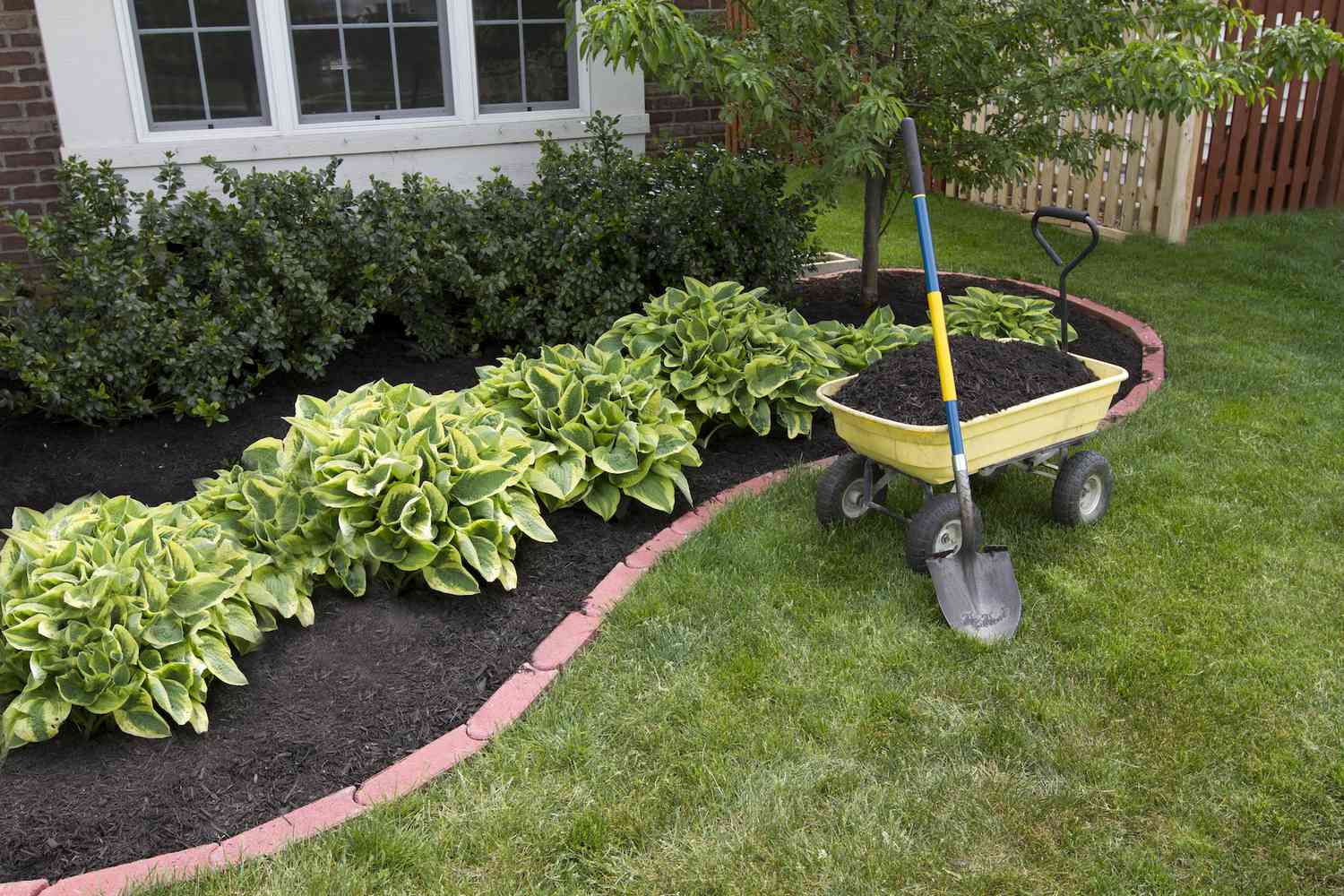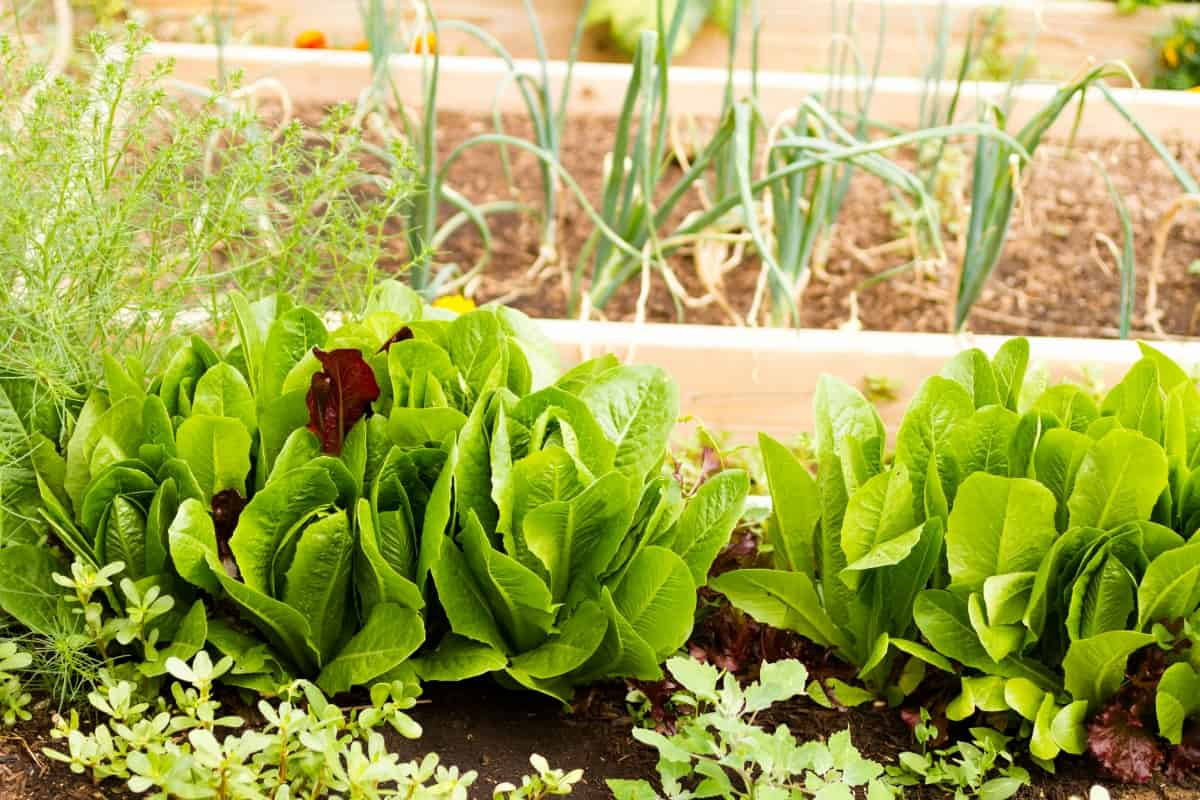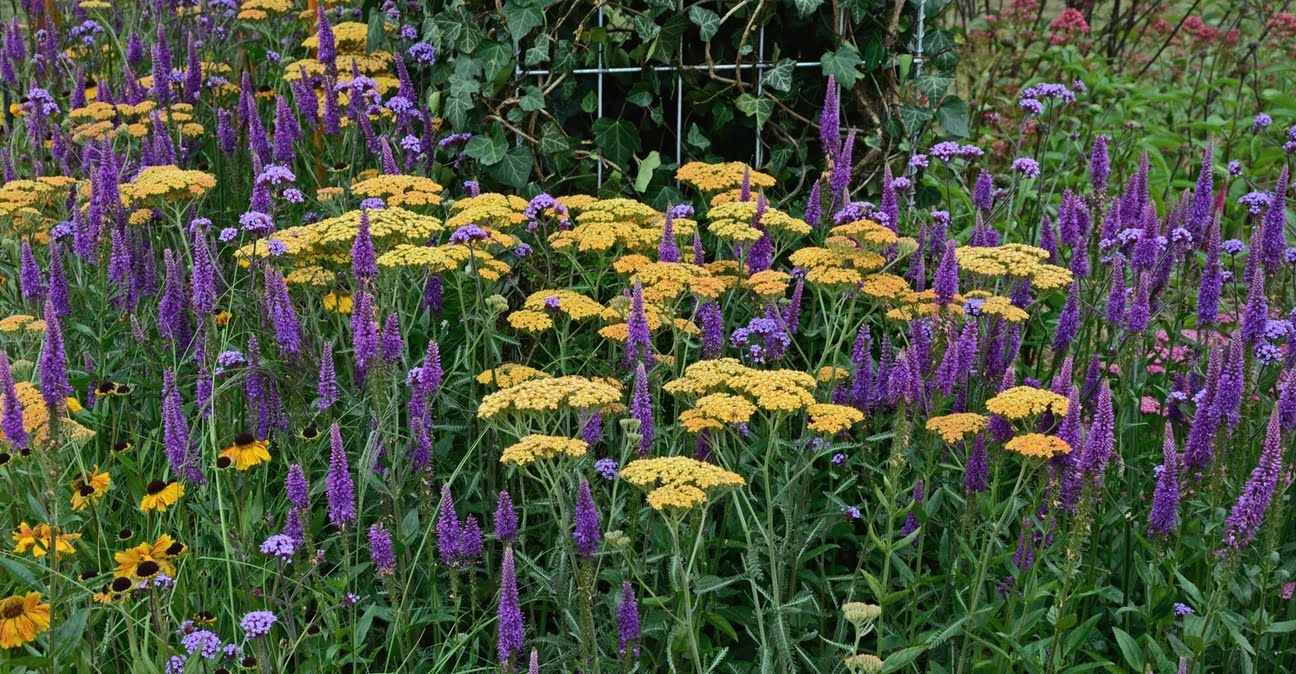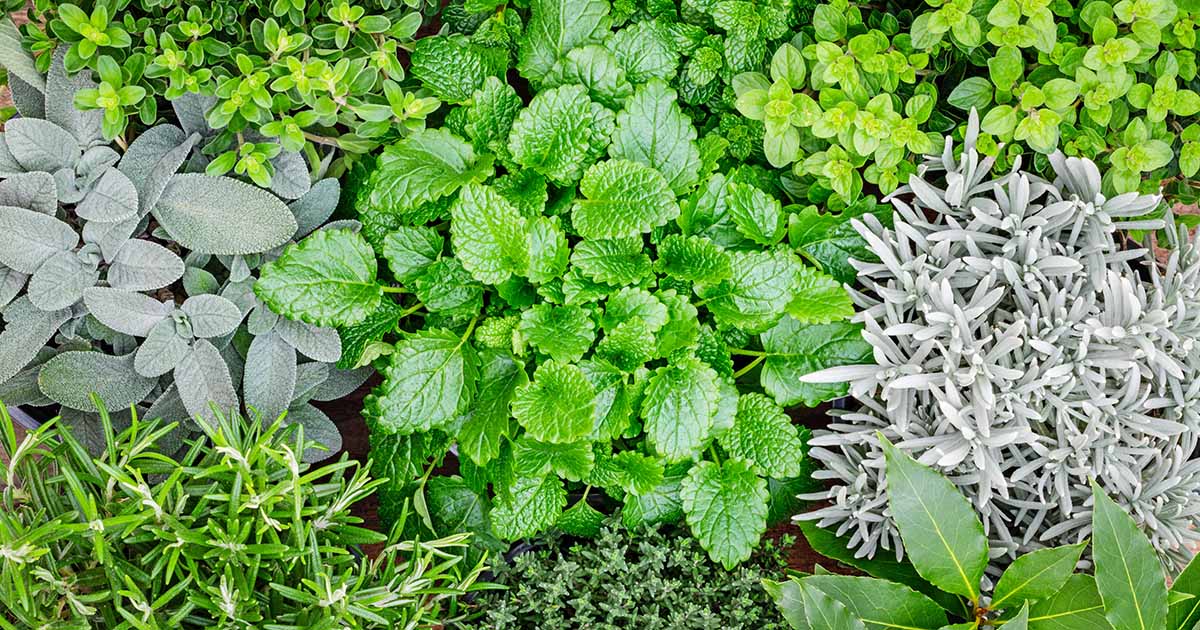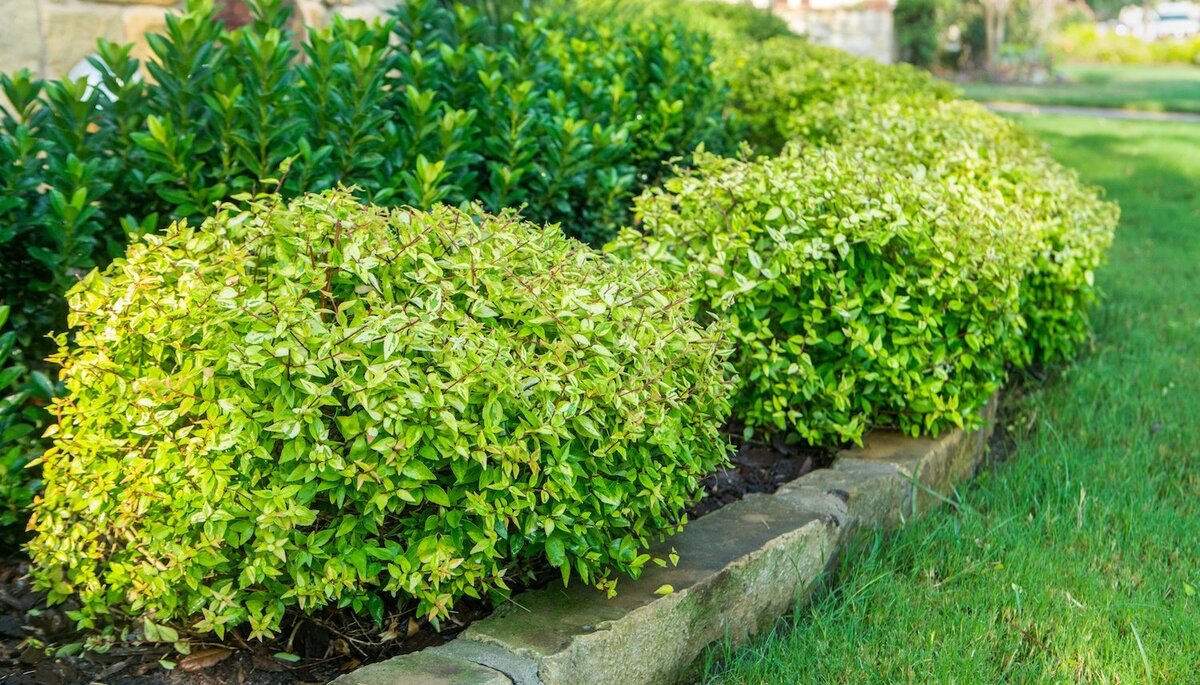Home>Gardening Techniques>Seasonal Gardening>What Shrubs To Plant In Winter


Seasonal Gardening
What Shrubs To Plant In Winter
Modified: January 22, 2024
Looking to add some color to your winter garden? Discover the best shrubs to plant during this seasonal gardening period and create a vibrant landscape.
(Many of the links in this article redirect to a specific reviewed product. Your purchase of these products through affiliate links helps to generate commission for Chicagolandgardening.com, at no extra cost. Learn more)
Table of Contents
- Introduction
- Benefits of Planting Shrubs in Winter
- Considerations for Choosing Shrubs for Winter Planting
- Evergreen Shrubs for Winter Planting
- Flowering Shrubs for Winter Planting
- Fragrant Shrubs for Winter Planting
- Winter-Blooming Shrubs for Winter Planting
- Cold-Hardy Shrubs for Winter Planting
- Drought-Tolerant Shrubs for Winter Planting
- Maintenance Tips for Winter-Planted Shrubs
- Conclusion
Introduction
Gardening is a delightful hobby that can be enjoyed year-round. While many people associate gardening with the spring and summer months, there is actually a lot you can do in your garden during the winter as well. One of the best ways to keep your garden vibrant and alive during the colder months is by planting shrubs specifically chosen for their ability to thrive in winter conditions.
Winter can be a challenging time for plants due to the colder temperatures and harsh weather conditions. However, there are many shrubs that are well-suited to withstand these challenges and even thrive in the winter landscape. By planting the right shrubs, you can add color, texture, and interest to your garden, even when most other plants are dormant.
There are several benefits to planting shrubs in winter. First, winter is a time when many gardens can feel dull and lackluster. By introducing evergreen shrubs or winter-blooming varieties, you can add visual interest and provide a much-needed pop of color to your outdoor space.
Another advantage of planting shrubs in winter is that they have a better chance of establishing their root system before the warmer months arrive. This allows them to establish a strong foundation to support their growth and development throughout the year.
Choosing the right shrubs for winter planting requires careful consideration. You need to take into account factors such as the climate in your region, the specific winter conditions, and the overall design of your garden. By selecting shrubs that are well-suited to your specific needs, you can ensure their survival and success.
In this comprehensive guide, we will explore different types of shrubs that are suitable for winter planting. From evergreens that provide year-round beauty to flowering and fragrant varieties, we will cover a range of options to help you create a vibrant and inviting garden even in the coldest months.
So, whether you are an avid gardener looking to make the most of the winter season or simply someone who wants to add some cheer to their outdoor space, read on to discover the best shrubs to plant in winter.
Benefits of Planting Shrubs in Winter
Planting shrubs in winter offers numerous benefits for your garden. While it may seem like an unconventional time to plant, it can actually be advantageous for both the plants and the gardener. Let’s explore some of the key benefits of winter shrub planting.
1. Establishment Time: When you plant shrubs in winter, they have a longer period to establish their root system before the arrival of spring. The cooler temperatures and ample moisture allow the plants to develop strong and healthy roots. This helps them better withstand the challenges of the growing season ahead.
2. Reduced Stress: Unlike planting in the spring or summer when the weather can be unpredictable, winter planting provides more stable conditions for the shrubs. With lower evaporation rates and less heat stress, the plants experience less transplant shock and have a higher chance of survival.
3. Availability and Variety: Nurseries and garden centers tend to have a wide selection of shrubs available during the winter months. Many gardeners focus on spring and summer planting, leaving a greater variety of plants for those who choose to plant in winter. This gives you the opportunity to explore unique and specialized species that may not be as easily found during other seasons.
4. Landscape Planning: Winter is the perfect time to assess gaps and areas in your garden that could use some improvement. By planting shrubs in winter, you can strategically fill in empty spots, create new focal points, and enhance the overall design of your landscape. This helps create a well-rounded garden that looks stunning year-round.
5. Spring Readiness: By planting shrubs in winter, you set your garden up for an impressive display in the spring. The plants will have already established their root system and will be ready to take advantage of the warming temperatures and longer days. This can result in healthier growth, earlier flowering, and an overall more robust and vibrant garden.
Whether you’re a novice gardener or a seasoned pro, planting shrubs in winter opens up a world of benefits. The establishment time, reduced stress on the plants, increased availability and variety, landscape planning opportunities, and spring readiness all contribute to successful and thriving gardens.
Now that you understand the advantages of winter shrub planting, let’s explore some important considerations when choosing the right shrubs for winter planting.
Considerations for Choosing Shrubs for Winter Planting
When it comes to choosing shrubs for winter planting, there are several important factors you should consider. By taking these considerations into account, you can ensure that the shrubs you select are well-suited to your garden’s specific needs and will thrive in winter conditions.
1. Climate: The first consideration is the climate in your region. It’s crucial to choose shrubs that are adapted to the temperature range, precipitation levels, and winter conditions of your area. Some shrubs are more tolerant of cold temperatures and can withstand frost and snow, while others may struggle in harsh winter climates.
2. Hardiness: Look for shrubs that are labeled as “cold-hardy” or have a suitable hardiness rating for your zone. The United States Department of Agriculture (USDA) has developed a plant hardiness zone map that divides the country into different zones based on the average minimum winter temperatures. This map can help you determine which shrubs are most likely to thrive in your specific zone.
3. Growth Habit and Size: Consider the growth habit and size of the shrubs you are considering. Take into account the available space in your garden and ensure that the shrubs you choose will fit comfortably without overcrowding. Additionally, think about the desired aesthetic and practical purposes of the shrubs. Do you want them to provide privacy, act as a focal point, or simply fill in empty spaces?
4. Soil and Sun Requirements: Different shrubs have varying soil and sun requirements. Some may prefer well-draining soil, while others thrive in moist conditions. Similarly, some shrubs thrive in full sun, while others are more shade tolerant. Take the time to assess the soil and sun conditions in your garden and match them with the specific requirements of the shrubs you are considering.
5. Purpose: Consider the purpose or function of the shrubs in your garden. Are you looking for evergreen shrubs to provide year-round foliage and structure? Are you interested in colorful flowering shrubs that will add a burst of color to your winter landscape? Do you want fragrant shrubs to fill your garden with delightful scents? Understanding the purpose or focal point you want to create will help guide your selection process.
6. Maintenance: Lastly, think about the level of maintenance you are willing to commit to. Some shrubs require regular pruning, while others are more low-maintenance. Consider your time and resources to ensure that you choose shrubs that align with your maintenance preferences.
By carefully considering these factors, you can make informed decisions when choosing shrubs for winter planting. This will help ensure that the shrubs you select not only survive but thrive in the winter landscape. In the next sections, we will explore various types of shrubs that are well-suited for winter planting, including evergreens, flowering varieties, fragrant shrubs, winter-blooming species, as well as cold-hardy and drought-tolerant options.
Evergreen Shrubs for Winter Planting
Evergreen shrubs are a fantastic choice for winter planting as they retain their foliage throughout the year, providing your garden with color, texture, and structure even when other plants have gone dormant. These shrubs not only add beauty to your landscape but also act as a natural privacy screen and windbreak. Here are some popular evergreen shrubs that thrive in winter conditions:
1. Boxwood (Buxus): Boxwood is a classic choice for winter gardens. With its dense, compact growth and dark green foliage, it adds elegance and formality to any landscape. Boxwood is hardy, low-maintenance, and can be easily shaped and pruned into various forms and sizes.
2. Holly (Ilex): Holly is known for its glossy, spiky leaves and bright red berries, which add a festive touch to any winter garden. It comes in different varieties, ranging from tall and narrow to compact and rounded. Holly thrives in well-drained soil and enjoys partial to full sun exposure.
3. Leatherleaf Mahonia (Mahonia bealei): This evergreen shrub offers architectural interest with its large, leathery leaves and clusters of bright yellow flowers in winter. It prefers partial shade and well-drained soil. Leatherleaf Mahonia is also known for being deer-resistant, making it a great choice for gardens with wildlife.
4. Japanese Pieris (Pieris japonica): With its vibrant, bell-shaped flowers that bloom in winter and early spring, Japanese Pieris adds a splash of color to the winter landscape. Its new growth emerges in bright red or bronze tones, complementing the dark green mature leaves. Japanese Pieris thrives in moist, well-drained soil and prefers partial shade.
5. Juniper (Juniperus): Junipers are versatile evergreen shrubs that come in various forms and sizes, from ground covers to upright varieties. They have a distinctive texture with their needle-like foliage and produce small cones or berries. Junipers are drought-tolerant and can thrive in full sun to partial shade.
6. Yew (Taxus): Yews are highly adaptable evergreen shrubs that tolerate a wide range of soil and light conditions. They have dense, dark green foliage and produce red berries. Yews can be pruned to various shapes and sizes, making them great for creating formal hedges or topiaries.
These are just a few examples of evergreen shrubs that are suitable for winter planting. When selecting evergreens, consider their ultimate size, growth rate, and specific soil and light requirements to ensure they thrive in your garden. Incorporating evergreen shrubs into your winter garden design will provide year-round beauty and structure.
In the next sections, we will explore other types of shrubs that are ideal for winter planting, including flowering varieties, fragrant shrubs, winter-blooming species, as well as cold-hardy and drought-tolerant options.
Flowering Shrubs for Winter Planting
While winter is often associated with dormant gardens, there are several flowering shrubs that can bring bursts of color and vibrancy to your outdoor space during the colder months. These flowering shrubs not only brighten up your landscape but also attract pollinators and provide a delightful visual display. Here are some popular options for flowering shrubs for winter planting:
1. Camellia (Camellia japonica): Camellias are prized for their stunning and delicate flowers that bloom in shades of white, pink, and red. These evergreen shrubs prefer partial shade and moist, well-drained soil. Camellias can start blooming as early as late fall and continue through the winter, depending on the specific variety.
2. Witch Hazel (Hamamelis): Witch Hazel is known for its unique spidery flowers that appear in shades of yellow, orange, and red. These fragrant blooms brighten up the winter landscape and can even withstand freezing temperatures. Witch Hazel bushes prefer full sun to partial shade and well-drained soil.
3. Winter Jasmine (Jasminum nudiflorum): Winter Jasmine is a deciduous shrub that produces bright yellow flowers on bare branches in late winter or early spring, depending on your climate. It can tolerate a wide range of soil conditions and thrives in full sun or partial shade. Winter Jasmine can also be trained to climb walls or trellises.
4. Winter Honeysuckle (Lonicera fragrantissima): As its name suggests, Winter Honeysuckle offers fragrant flowers that bloom in late winter to early spring. Its small, creamy-white flowers exude a sweet scent that attracts pollinators. Winter Honeysuckle thrives in well-drained soil and can tolerate full sun to partial shade.
5. Winterberry (Ilex verticillata): Winterberry is a deciduous shrub that adds a splash of color to the winter garden with its bright red berries. These berries persist throughout winter and are a valuable food source for birds. Winterberry shrubs prefer moist, acidic soil and full sun to partial shade.
6. Wintersweet (Chimonanthus praecox): Wintersweet is a mesmerizing shrub that produces highly fragrant, yellow flowers with maroon centers. These flowers bloom in late winter or early spring and add a lovely fragrance to the garden. Wintersweet prefers full sun to partial shade and well-drained soil.
Planting flowering shrubs in winter allows you to enjoy their beautiful blooms when most other plants are dormant. Make sure to consider the specific soil, light, and moisture requirements of each shrub to ensure their optimal growth and performance. These flowering shrubs will not only bring color and charm to your winter garden but also provide nectar and habitat for beneficial wildlife.
Next, let’s explore fragrant shrubs that can fill your garden with delightful scents during the winter months.
Fragrant Shrubs for Winter Planting
Adding fragrance to your garden is a wonderful way to enhance the sensory experience, and there are several fragrant shrubs that thrive in winter conditions. These shrubs not only provide visual beauty but also fill the air with delightful scents, making your outdoor space a sensory delight during the colder months. Here are some popular fragrant shrubs for winter planting:
1. Winter Daphne (Daphne odora): Winter Daphne is a highly prized shrub renowned for its intoxicating fragrance. Its small, pink or white flowers bloom from late winter to early spring and emit a powerful sweet scent. Winter Daphne prefers well-drained soil and partial shade to protect it from harsh afternoon sun.
2. Christmas Box (Sarcococca confusa): Christmas Box, also known as Sweet Box, is a compact evergreen shrub that produces tiny, white flowers in late winter. Despite its small size, the flowers have a strong and sweet aroma that fills the air. Christmas Box thrives in moist, well-drained soil and tolerates shade well.
3. Wintersweet (Chimonanthus praecox): Wintersweet not only delights the eyes with its unique yellow blooms but also enchants the senses with its captivating fragrance. Its flowers emit a lovely scent that intensifies on sunny winter days. Wintersweet prefers full sun to partial shade and well-drained soil.
4. Witch Hazel (Hamamelis): Witch Hazel not only boasts beautiful yellow, orange, or red flowers but also offers a subtle fragrance that adds a touch of enchantment to the winter garden. Witch Hazel bushes prefer full sun to partial shade and well-drained soil.
5. Winter Honeysuckle (Lonicera fragrantissima): Winter Honeysuckle is a deciduous shrub that produces sweetly scented, creamy-white flowers in late winter to early spring. Its fragrance permeates the garden, attracting pollinators and adding a delightful touch to the winter landscape. Winter Honeysuckle thrives in well-drained soil and can tolerate full sun to partial shade.
When selecting fragrant shrubs for winter planting, consider their specific soil, light, and moisture requirements to ensure their optimal growth and fragrance. These fragrant shrubs will not only add a delightful scent to your garden but also create a welcoming and serene atmosphere during the winter months.
Next, let’s explore winter-blooming shrubs that can bring additional beauty and color to your winter landscape.
Winter-Blooming Shrubs for Winter Planting
When most plants are dormant during winter, there are specific shrubs that grace the landscape with their beautiful blooms, adding a much-needed touch of color and cheer. These winter-blooming shrubs are a delight to behold and can brighten up your garden during the colder months. Here are some popular options for winter-blooming shrubs:
1. Winter Jasmine (Jasminum nudiflorum): Winter Jasmine is a deciduous shrub that produces bright yellow flowers on bare branches in late winter or early spring, depending on your climate. Its vibrant blooms create a stunning contrast against the leafless branches, bringing a burst of color to the winter garden. Winter Jasmine can tolerate a wide range of soil conditions and prefers full sun or partial shade.
2. Camellia (Camellia japonica): Camellias are renowned for their striking flowers that bloom in various colors, including shades of white, pink, and red. These evergreen shrubs start blooming in late fall or early winter, depending on the specific variety. Camellias prefer partial shade and moist, well-drained soil.
3. Witch Hazel (Hamamelis): With its unique spidery flowers in shades of yellow, red, and orange, Witch Hazel is a standout winter-blooming shrub. Its blooms appear on bare branches from late fall to early spring, depending on the species. Witch Hazel is a hardy shrub that prefers full sun to partial shade and well-drained soil.
4. Winter Heath (Erica carnea): Winter Heath is a low-growing shrub that adorns the garden with colorful flowers from late winter to early spring. It comes in a variety of hues, including shades of pink, purple, and white. Winter Heath thrives in well-drained, acidic soil and full sun to partial shade.
5. Christmas Rose (Helleborus niger): Christmas Rose is a perennial evergreen shrub that produces charming white or pink flowers in the winter months. As its name suggests, this shrub often blooms around Christmas time, bringing joy to the garden during the holiday season. Christmas Rose prefers partial shade and moist, well-drained soil.
These winter-blooming shrubs are a valuable addition to any garden, providing beauty and color when least expected. By incorporating these flowering beauties into your winter landscape, you can create a garden that is visually appealing and captivating throughout the year.
In the following sections, we will explore cold-hardy shrubs and drought-tolerant shrubs that are well-suited for winter planting, ensuring the resilience and survival of your garden even in challenging conditions.
Cold-Hardy Shrubs for Winter Planting
Gardening in cold climates can be challenging, but there are numerous cold-hardy shrubs that can withstand freezing temperatures and still thrive beautifully. These shrubs are specifically adapted to endure harsh winter conditions, making them perfect for planting in colder regions. Here are some popular choices for cold-hardy shrubs:
1. Lilac (Syringa): Lilacs are known for their stunning and fragrant flowers that bloom in spring. These deciduous shrubs are hardy and can tolerate cold winters. They come in a variety of colors, including shades of purple, pink, and white. Lilacs prefer full sun and well-drained soil. Pruning shortly after flowering can help promote optimal growth for the following year.
2. Red Twig Dogwood (Cornus sericea): Red Twig Dogwood is a deciduous shrub that stands out in winter with its vibrant red stems. Its branches provide a striking contrast against the snowy landscape. Red Twig Dogwood prefers full sun to partial shade and moist soil. Regular pruning can help maintain the bright color of its stems.
3. Siberian Carpet Cypress (Microbiota decussata): Siberian Carpet Cypress is a low-growing evergreen shrub that forms a dense carpet of green foliage. It is highly tolerant of cold temperatures, making it an excellent choice for winter planting in cold climates. This shrub prefers full sun to partial shade and well-drained soil.
4. Siberian Pea Shrub (Caragana arborescens): Siberian Pea Shrub is a small deciduous shrub that is both cold-hardy and drought-tolerant. It features delicate yellow flowers in spring and forms dense branches with attractive green foliage. Siberian Pea Shrub prefers full sun and well-drained soil.
5. Arctic Fire Dogwood (Cornus stolonifera): Arctic Fire Dogwood is a compact shrub that displays bright red stems in winter. It is cold-tolerant and provides a beautiful backdrop in the winter garden. Arctic Fire Dogwood prefers full sun to partial shade and moist soil.
6. Japanese Yew (Taxus cuspidata): Japanese Yew is a slow-growing evergreen shrub that is highly adaptable to cold climates. It has dark, glossy foliage and can be shaped into various forms and sizes. Japanese Yew prefers partial shade and well-drained soil.
These cold-hardy shrubs are well-suited for winter planting in chilly regions. They not only withstand the cold but also provide visual interest and structure to your garden during the winter months. As you select cold-hardy shrubs for your garden, consider the specific soil, light, and moisture requirements of each shrub and ensure that they align with your gardening conditions.
Next, we will explore drought-tolerant shrubs that are resilient and can thrive even in dry winter conditions.
Drought-Tolerant Shrubs for Winter Planting
Gardening in regions with dry winter conditions can be challenging, but there are several drought-tolerant shrubs that are well-suited for these environments. These shrubs are adapted to conserve water and thrive in arid or dry climates, making them excellent choices for winter planting. Here are some popular options for drought-tolerant shrubs:
1. Russian Sage (Perovskia atriplicifolia): Russian Sage is a perennial shrub that thrives in dry conditions. It features aromatic silvery-gray foliage and delicate lavender-blue flowers that bloom in late summer or early fall. Russian Sage prefers full sun and well-drained soil, making it an excellent choice for arid winter regions.
2. Rosemary (Rosmarinus officinalis): Rosemary is a versatile evergreen shrub that is not only drought-tolerant but also offers culinary uses. It has fragrant needle-like leaves and small blue flowers that add beauty to the garden. Rosemary prefers full sun and well-drained soil, making it ideal for dry winter climates.
3. Barberry (Berberis): Barberry is a hardy shrub that comes in various cultivars and offers colorful foliage, architectural appeal, and drought tolerance. Its small yellow or red flowers are followed by attractive berries. Barberry thrives in full sun to partial shade and well-drained soil. However, it’s important to note that some varieties may be invasive in certain regions, so check local regulations before planting.
4. Butterfly Bush (Buddleja davidii): Butterfly Bush is a deciduous shrub that produces long panicles of fragrant flowers that attract butterflies and hummingbirds. It is highly tolerant of dry conditions and blooms in various colors, including shades of purple, pink, and white. Butterfly Bush prefers full sun and well-drained soil.
5. Desert Marigold (Baileya multiradiata): Desert Marigold is a resilient shrub that thrives in hot and dry environments. It displays bright yellow flowers and gray-green foliage, adding a pop of color and texture to the winter landscape. Desert Marigold prefers full sun and well-drained soil.
6. Yucca (Yucca spp.): Yuccas are hardy and drought-tolerant shrubs that are often associated with arid landscapes. They feature sword-shaped leaves and produce tall spikes of white or cream flowers. Yuccas prefer full sun and well-drained soil.
When selecting drought-tolerant shrubs for winter planting, consider their specific drought adaptation mechanisms, such as deep root systems or waxy leaves, to ensure their success in dry conditions. These shrubs not only conserve water but also provide beauty and resilience to your garden, ensuring a thriving landscape even in water-scarce environments.
In the next section, we will explore some important maintenance tips to help you care for your winter-planted shrubs and ensure their continued health and beauty.
Maintenance Tips for Winter-Planted Shrubs
After winter planting your shrubs, it’s important to provide proper care and maintenance to ensure their health and longevity. Here are some essential maintenance tips to follow for your winter-planted shrubs:
1. Watering: Although winter may bring more natural moisture, it’s important to monitor the moisture levels in the soil and provide supplemental watering when needed. Water your shrubs deeply and infrequently to encourage deep root growth. Be mindful not to overwater, as excessive moisture can lead to root rot.
2. Mulching: Apply a layer of mulch around the base of your shrubs to help conserve moisture in the soil, regulate soil temperature, and suppress weed growth. Use organic mulch, such as wood chips or bark, and make sure to keep the mulch a few inches away from the shrub’s trunk to prevent rotting.
3. Pruning: Prune your shrubs as needed to maintain their shape and size. Avoid heavy pruning in winter, especially for flowering shrubs, as it may remove potential flower buds. Instead, wait until spring or early summer to perform any major pruning. Remove any dead, damaged, or diseased branches promptly to promote overall plant health.
4. Fertilizing: Avoid fertilizing your shrubs immediately after planting, as they need time to establish their root system. Wait until the following spring, then apply a balanced, slow-release fertilizer according to the specific needs of your shrubs. Follow the instructions on the fertilizer packaging for proper application rates.
5. Protection from Extreme Weather: Take precautions to protect your winter-planted shrubs from extreme weather conditions. If a harsh freeze or heavy snowfall is expected, consider covering your shrubs with burlap or a frost cloth to provide insulation and prevent damage. Avoid removing snow from the branches, as it can act as an insulator against the cold.
6. Monitor Pests and Diseases: Keep an eye out for any signs of pests or diseases on your shrubs. Inspect the leaves, stems, and branches regularly for any abnormalities or infestations. If you notice any issues, promptly take appropriate measures such as applying organic pest control or consulting with a professional to prevent further damage.
7. Regular Inspections: Throughout the winter and into the following seasons, routinely inspect your shrubs for any signs of stress, nutrient deficiencies, or overgrowth. Taking proactive steps such as pruning, treating for pests and diseases, or adjusting watering and fertilization can help maintain the health and appearance of your shrubs.
By following these maintenance tips, you can ensure the continued health and vitality of your winter-planted shrubs. Remember to stay attentive to your shrubs’ needs and make adjustments accordingly to promote their growth and resilience.
Now that you are equipped with a wealth of knowledge on selecting, planting, and maintaining various types of shrubs for winter, you can confidently create a stunning garden that thrives even during the coldest months. Happy gardening!
Conclusion
Winter planting of shrubs offers a unique opportunity to create a vibrant and captivating garden even during the coldest months. By carefully selecting the right shrubs for your specific needs and climate, you can enjoy the benefits of year-round beauty, color, fragrance, and structure in your outdoor space.
Planting evergreen shrubs provides the garden with an enduring backdrop of foliage and acts as a natural privacy screen. Flowering shrubs bring bursts of color and attract pollinators, while fragrant shrubs fill the air with delightful scents. Winter-blooming shrubs add beauty and cheer to a dormant landscape, while cold-hardy shrubs withstand freezing temperatures. Drought-tolerant shrubs withstand arid conditions, ensuring resilience in water-scarce environments.
However, successful winter shrub planting requires careful consideration. Factors such as climate, hardiness, growth habit, soil and sun requirements, and purpose need to be taken into account to ensure optimal performance and survival of the shrubs.
Additionally, proper maintenance is crucial for the continuous growth and health of winter-planted shrubs. Adequate watering, mulching, pruning, fertilizing, and protection from extreme weather help to sustain the shrubs and prevent common issues. Regular inspections and prompt action against pests and diseases ensure long-term vitality.
Incorporating these guidelines and tips into your gardening practices will help you create a flourishing winter garden that delights the senses and adds beauty to your outdoor space. Remember to personalize your choices based on your region’s climate and your garden’s design goals.
As you embark on your winter shrub planting journey, always stay attentive to the specific needs of your shrubs and adapt your care accordingly. With thoughtful selection, proper planting techniques, and diligent maintenance, you can create a magnificent garden that thrives year-round, bringing joy and tranquility even during the coldest months of the year.
